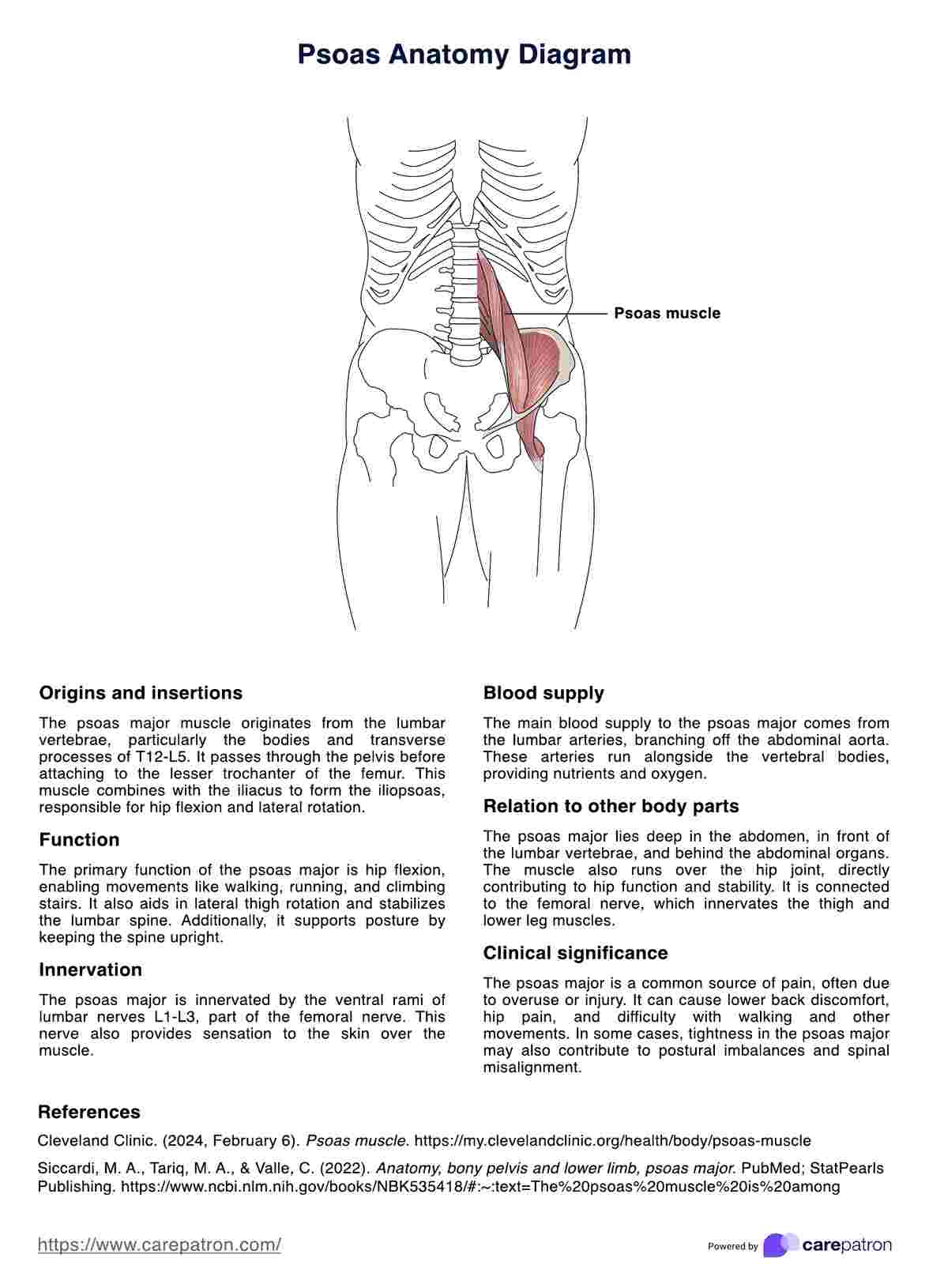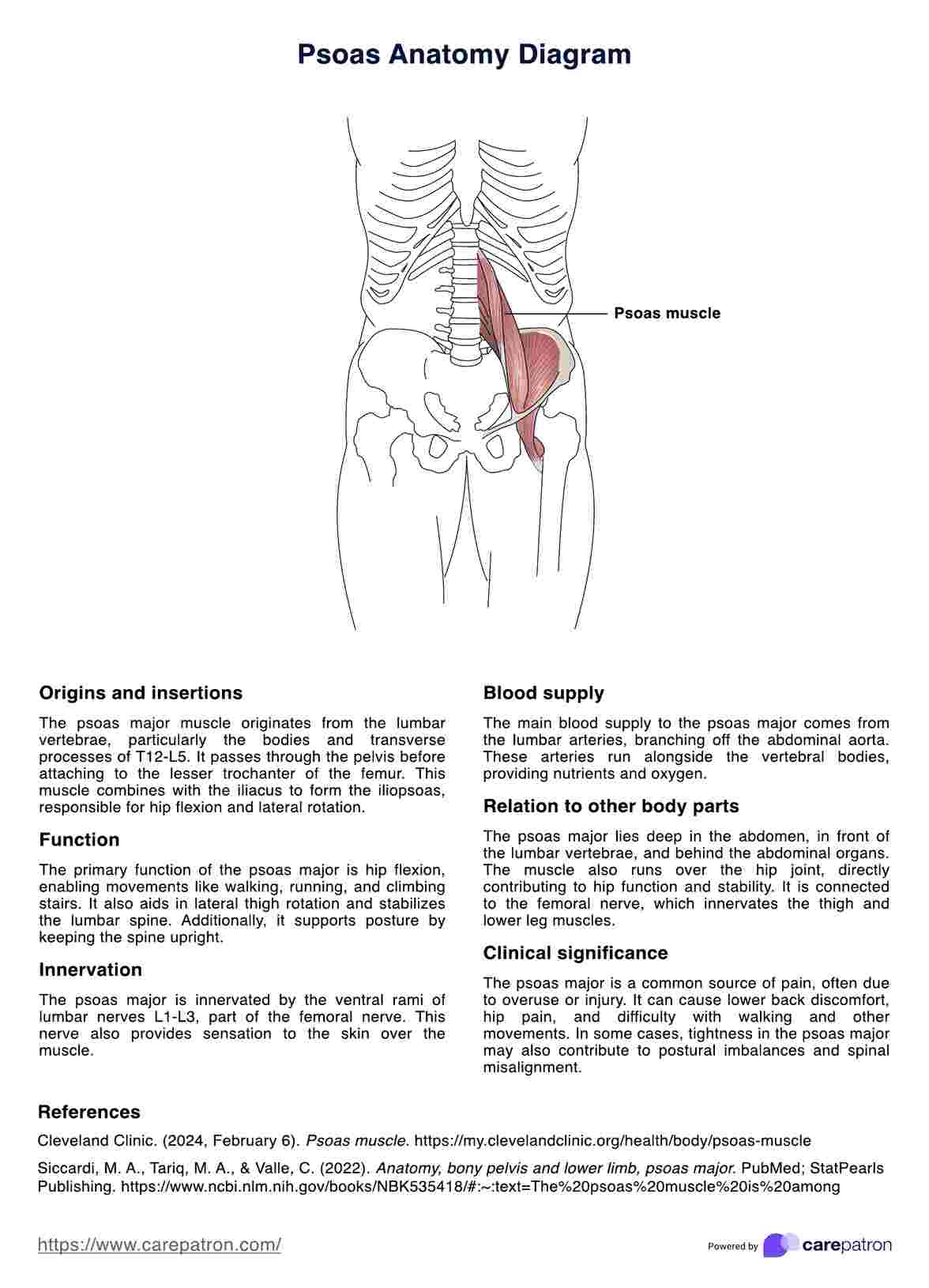Psoas Anatomy Diagram
Get access to a free Psoas Anatomy Diagram. Download the PDF and use as a handy reference for your practice.


What is the psoas muscle?
The psoas muscle, or the psoas major, is a long, thick muscle located deep in the abdomen. It runs from the lower back and pelvis to the top of the thigh bone (femur). Along with the iliacus muscle, the psoas is part of the iliopsoas muscle group.
The main function of the psoas major muscle is flexion of the hip joint, which allows for movement such as lifting the leg, walking, and running. It also helps to stabilize the spine and pelvis during these movements
In addition to its physical function, psoas major muscle fibers also play a role in emotional and mental well-being. As it is connected to the diaphragm, tension or tightness in this muscle can affect our breathing and create a sense of anxiety or stress.
The psoas muscle also has a close relationship with the femoral nerve, which either runs through or around it. This nerve is vital for providing sensory and motor functions to the thigh muscles, including the psoas.
Psoas Anatomy Diagram Template
Psoas Anatomy Diagram Example
Commonly asked questions
The psoas muscle plays a crucial role in various bodily movements, particularly in hip flexion and stabilization of the lumbar spine. Originating from the transverse processes of the lumbar vertebrae and extending to the anterior superior iliac spine, the psoas muscle, when combined with the iliacus muscle, forms the iliopsoas tendon.
The psoas muscle is located deep within the posterior abdominal wall, lying adjacent to the vertebral column. It traverses the bony pelvis and passes beneath the inguinal ligament before attaching to the lesser trochanter of the femur. The muscle's unique positioning allows it to interact with other important structures, such as the psoas minor muscle, quadratus lumborum muscle, and the anterior rami of the lumbar plexus.
Several conditions can impact the psoas muscle, including psoas syndrome, tendonitis, and muscle strain. These issues typically result from overuse, improper posture, or trauma in the region. Symptoms often manifest as lower back pain and difficulties in performing hip flexion, among others.







































































































